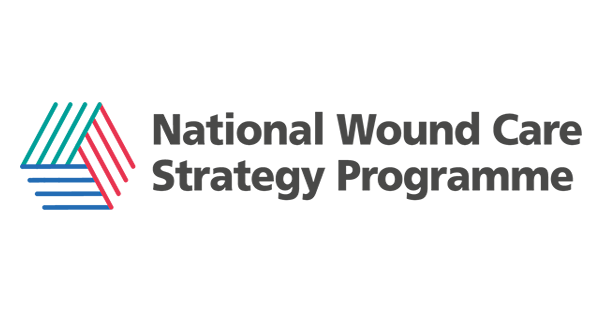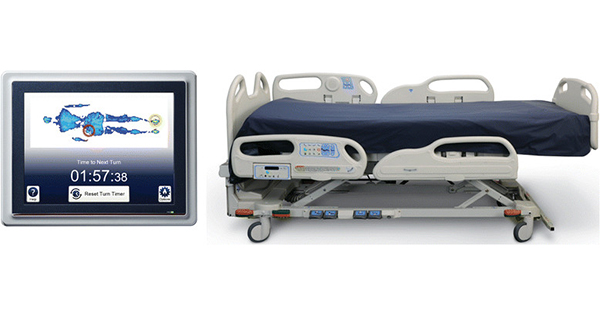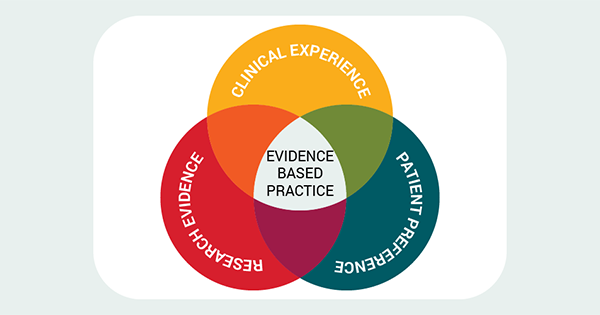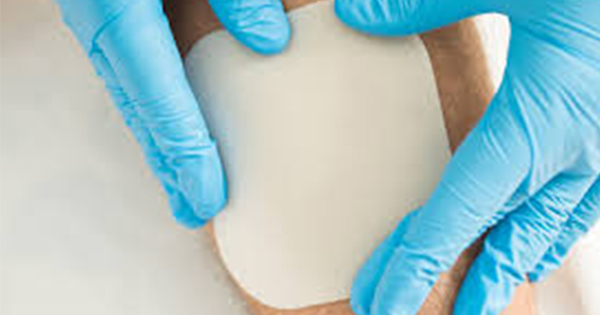In 2021, the Skin Integrity Team (SIT) at Doncaster and Bassetlaw Teaching Hospitals NHS Foundation Trust (DBTH) underwent a service redesign. As part of that process it was identified that the Trust had a 3-year, year-on-year, increase in number of episodes of hospital acquired pressure ulcers (HAPUs) category 2 and above.
Available Knowledge
There was a 3-year, year-on-year increase of episodes of HAPUs at DBTH, from 578 in 2017/2018 to 836 in 2020/2021. The data collection and measuring showed that since 2017, DBTH had seen an increase of 45% in HAPUs, which can be seen in Figure 1. Based on the current conditions and root causes, quality indicators to measure improvement were agreed to measure outcomes and help formulate any additional changes needed. The quality indicators used to measure improvement can be seen in the metrics section of the work plan in Figure 2.
The current pressure ulcer prevention and management plans and interventions at DBTH included:
- An out-of-date operational policy for pressure ulcer prevention and management
- The risk assessment was not 100% compliant with PURPOSE T
- Care plan and interventions were linked to the ‘tissue viability top 10’ which was internally developed
- A 2-tier approach for mattress provisions (Green risk = foam; amber and red risk = Dynamic) which lead to a large use in dynamic mattress that often led to long waiting times for equipment to become available to patients
- The cost of purchasing a high specification dynamic for the required ‘red risk’ patients in additional to ‘amber risk’ patients added significant cost pressures to the Trust
- Pressure ulcer prevention and management education was provided via eLearning, which was timely to update, leading to the material often being out of date and not in line with the Trust policies
- No additional support provided to wards/departments with the highest number of HAPUs.
Rationale
During a service redesign in 2021, the SIT at DBTH reviewed the current data and practices around pressure ulcer prevention and management. This formed the starting point of a QI plan that was developed and implemented at the Trust over 4 years. The QI process[Figure 2] to improvement was as follows:
- Overarching principles: Engagement, involvement and measuring
- Step 1 Starting out: What to improve?
- Step 2. Diagnosis: Understand the issue. What is the aim and change ideas?
- Step 3. Improvement in action: Planning and testing
- Step 4. Every day practice: Implementing, Embedding, Sustaining
- Step 5. Together: Sharing and spreading.
The SIT commenced a quality improvement (QI) plan to reduce the number of hospital acquired pressure ulcers over a 4-year period (2021-2025) to improve patient outcomes. QI enable systematic tools and methods to be used to continuously improve the quality of care and outcomes for patients (Jabbal, 2017). This requires a systematic approach based on iterative change, continuous testing and measurement, and the empowerment of frontline teams (Ross and Naylor, 2017).
The SIT used QI methodology supported by quality improvement and innovation strategy at DBTH to gain understanding of the current position, current themes and tends, current learning, the national and local evidence-based recommendations, and the gap between DBTH and the national and local recommendations. In addition, the SIT examined the desired future position with an aim and vision, ideas for change, testing change, engagement with staff, embedding change and sustaining improvement. They planned yearly review of the QI plan to ensure all the plans and information remained up to date and relevant.
During the QI plan, the National Wound Care Strategy Programme (NWCSP) developed and published Pressure Ulcer Recommendations (NWCSP, 2024) to signpost clinicians to relevant clinical guidelines or outline evidence-informed care with the aim to increase healing and optimise the use of healthcare resources. SIT reviewed the recommendations as part of their yearly re review and made plans to include them in the remaining QI plan for improvement-led delivery.
The plan was improvement-led involving the whole organisations to focus on quality of care through evidence-based improvement methods, underpinned by data and measurements to increase productivity a deliver better care outcomes for patients (NHS England, 2023).
Specific aims
Engagement between the SIT and the patient quality and safety teams at DBTH was established and a vision was agreed for the following aims to be achieved, based on the 2020/2021 patient episode data:
- 20% reduction by the end of March 2023 (n=669)
- 50% reduction by the end of March 2025 (n=418).
Interventions
Engagement
Engagement with staff across DBTH was undertaken by SIT to gain their perception around the increase of HAPUs. This was undertaken through verbal interviewed between staff. In addition, engagement between the SIT and the patient quality and safety teams at DBTH was undertaken to review past practices and policies.
Scoping and processing mapping
A scoping and processing mapping exercise was then undertaken to plan the ‘vision of the future’, which included aims to ensure the vision is achieved.
National recommendations
The SIT reviewed the NWCSP Pressure Ulcer Recommendations (2024) and did a gap analysis against the current practices recommended at DBTH. Seventeen main recommendations were made from the document covering, screening, risk assessment and diagnosis, ongoing care, review of healing and care following healing. It was identified that DBTH was currently compliant with only 23% (n=4) of the recommendation.
Planned activity
Ten activities were planned in 2021-2022 to assist with achieving the aims, which included:
- Update the operational policy for pressure ulcer prevention and link in MASD
- Updated to at risk care plans and interventions to meet national recommendations
- The SIT will now review all category 2 and above pressure ulcers.
- Review the pressure ulcer investigation process and terms of reference to have a culture and environment based on learning.
- HAPU will be presented by Ward Manager and Matron at a learning group to establish learning and action plans to prevent the recurrence and establish and serious incidents that may have occurred
- Develop a working group to look at improvements in the management, flow and use of the equipment
- Agreements to ensure pressure relieving preventative equipment is in place for all patients
- Audit and investment into pressure redistributing equipment to increase availability and ensure those patients who require this equipment receive it
- Improving the quality of practice through learning and education
- The SIT will spend time working on the wards with the highest number of HAPUs category 2 and above.
During the yearly PDSA review three additional activities were planned in 2022.2023 to assist the aim to be achieved, which included:
- Understand themes with heel pressure ulcers
- Understand themes with Catheter MDRPUs
- Improve Slide Sheet compliance across the Trust.
During the next yearly PDSA review, two additional activities were planned in 2023-2024 to assist the aim to be achieved, which included:
- Test implementations to addressed the themes with heel pressure ulcers
- Test implementations to addressed the themes with Catheter MDRPUs.
Following the final PDSA review, eight final activities were planned in 2024-2025 to assist the aim to be achieved, which included:
- Implementing all elements of the NWCSP recommendations for pressure ulcers
- Implement changes to practice to address the themes with heel pressure ulcers
- Implement changes to practice to address the themes with Catheter MDRPUs
- Implement NWCSP categorisation
- Implement National recommended risk assessment PURPOSE T
- Ward based education delivered by the Skin Integrity Team is linked to theatrical themes of the HAPUs
- Ensure the education provisions are consistent across the Doncaster area
- Ensure the education materials are in line with the NWCSP pressure ulcer curriculum education framework/ELFH.
Study of the interventions
Engagement
SIT undertook a gap analysis of the engagement with all the collected data and information against the national recommended practices for pressure ulcer prevention and management. It was concluded that there were a number of factors appear to have impacted on the increase in the number of HAPU category 2 and above episodes which was discussed in a scoping and processing exercise.
Scoping and processing mapping
The principles from the scoping and processing mapping were built into the planned activity of the work plan.
National recommendations
Plans were put in place to implement the remaining 13 recommendation by the end of 2024/2025. This included, but did not exclude:
- Reviewing how documentation, including risk assessment and wound assessments, could be utilised on an electronic patient records rather than paper, which would enable automated alerts, referrals and escalations as required
- Identifying from staff how they would like education and support around pressure ulcer to be delivered
- Updating the education provisions in line with the recommendations and e learning for health material
- Update clinical pathways relating with pressure ulceration, as seen in Figures 3, 4 and 5
- Implementing new preventative techniques to DBTH, such as heel offloading boots and catheter fixation devices.
Planned activity
To keep track of the action that required implementing, embedding and sustaining across the Trust to meet the aim and vision of the QI plan, the SIT developed a highlight report to keep on track with the work plan. This was able to provide assurance with the process they were making and highlight area that required more input or re-reviewing. The highlight report can be seen in Figure 6.
This enables SIT to re-review every year the work plan every year as a minimum to ensure the planned activities and outcomes remained appropriate and achievable. As part of the 2023/2024 re-review it was identified that the NWCSP were developing national recommendations for pressure ulcer prevention.
The recommendations proposed an evidence-informed standardised pathway of care to prevent and manage pressure ulcers in England (NWCSP, 2024). The recommendations outline what best practice should look like and are based on the recommendations in the NICE Clinical Guideline: Pressure ulcers: prevention and management (2015) and the NICE Quality Standard: Pressure ulcers (2015) updated using the EPUAP, NPIAP, PPPIA Pressure Ulcer Guidelines (2019). These NWCSP pressure ulcer recommendations (2024) also included consideration of research studies, healthcare resources, clinical settings and individuals’ preferences. The recommendations they developed were based on evidence retrieved using a systematic approach to searching and then sense-checked with academics, healthcare professionals and patients and carers, before a wider consultation with those registered with the NWCSP stakeholder forums (NWCSP, 2024).
Measures
The measures used for the outcomes and processes of the intervention in relation to achieving the aim were undertaken prior to commencing the interventions of change and through the process, with a conclusion being summarised at the end of the 4 years. The measures metrics included:
- The number of HAPU episodes
- The number of HAPU episodes per 1,000 bed days
- The compliance level of the elements of the NWCSP recommendations for pressure ulcers being implemented
- Compliance of mattress type in use for the patient risk status
- Compliance of slide sheet use.
Analysis
The findings from the measure metrics were interpreted to:
- Understand the gap between local recommendations compared to national recommendations, to enable actions to be developed to reduce the gap while reducing variation.
- To triangulate the compliance of national recommends, compliance with care delivery and the level of harm through episodes of HAPUs, to enable actions to be developed to adjust processes or pathway the assist and support the transition of the recommendations to into care delivery.
Results
HAPU episodes
- A 34% (552) reduction of HAPUs in 2022-2023 was achieved along with a 64% (302) reduction in 2024-2025, based on the 2021-2022 data, as seen in Figure 6 and 7. The 2024-2025 data were the lowest episodes since they were collected in 2014, as seen in Figure 8.
- The average HAPU episodes per 1,000 bed days in 2023-2024 was 2.29, whereas in 2024-2025, it was reduced by 54% to 1.05, as seen in Figure 9. The reduction over the last 4 years has saved the NHS an estimated £3,177,000 when using the NHS Improvement Pressure Ulcer Productivity Calculator 2016/2017.
- By the end of 2024-2025 94% (n=16) of the recommendations were in place, with the remaining recommendation put in the pressure ulcer reduction work plan for 2025-2028, as seen in Figure 10. This process and outcomes were concluded at the end of 2024/2025 and concluded that 94% (n=17) of the actions had been implemented, which can be seen in Figure 11.
Planned activity
There were several activities undertaken with the aim of both increasing the compliance with the NWCSP pressure ulcer recommendations and implementing related factors with the goal of reducing the episodes of hospital-acquired pressure ulcers, which included:
- Updating the Trust operational policy for pressure ulcer prevention and including MASD to meet the national requirements
- Implementing 94% of the elements of the NWCSP recommendations for pressure ulcers by the of 2024-2025
- The updating of pressure Ulcer ‘at risk’ care plans and interventions to meet national recommendations (aSSKINg)
- Implementing the NWCSP recommended Categorisation tool (Category 1,2,3,4, M)
- Implementing catheter fixation securing devices as part of the standard pressure ulcer prevention care plan to improve pressure ulcer prevention for Catheter MDRPUs
- The SIT reviews all reported HAPU category 2 and above and provide a primary verification at the time of review, with the nurse consultant providing a final verification at the end of each month
- The implementation of PSIRF for all HAPU 2 and above with quality improvement meetings
- Each ward/department having an action plan relating to HAPUs
- Developing a triangulated data system to identify what areas require additional SIT support using the HAPU per 1,000 bed days at ward level with the compliance of slide sheets and equipment use at ward level
- Purchasing hybrid mattress to replace the majority of foam mattresses
- Ensuring that appropriate mattresses are used per patient at risk status to meet the requirements within the Trust Policy — saw an increase by 11% from 70% to 81%.
- Ensuring appropriate mattresses are available across the Trust with a 5% surplus of hybrid/dynamic mattresses
- Initiating a QI project with specific focus on tackling Trust slide sheet compliance — unfortunately, the average Trust slide sheet compliance in February 2025 was 60%, not the planned 80%+.
- Initiating a consistent approach to pressure ulcer prevention and management that meets the NWCSP recommendations and ELFH, therefore increasing the take up of evidence-based practice
- Reducing variation in knowledge — 12% increase in the average base line pre-knowledge percentage at the 3-yearly update of the pressure ulcer prevention and management in house educational module (2021-2022 = 53% and 2024-2025 = 65%).
Summary
By combining quality improvement (QI) and innovation methodology combined with national recommendations and evidence-based practice, service change, provision of care and patient outcomes can be improved.
Interpretation
Through the QI process, DBTH was able to identify areas for improvement and change to ensure it met national recommendations and delivered them in a way that achieved the local patient population requirements. The project achieved a significant reduction in hospital-acquired pressure ulcers, which had a positive impact on reducing harm to patient and reducing the estimated NHS cost of managing patient with a pressure ulcer (when using the NHS Improvement Pressure Ulcer Productivity Calculator 2016-2017).
Limitations
Some limitations to the project included access to good quality data that was either not available or required manual analysis. Due to this, the measure metrics were limited to data and information that was available at the Trust. The data analysis was timely as it was manually reviewed and interpreted by the SIT team due to there being no systems in place to automatically extract and interpret the data. This made the whole process of measures and results slower than the SIT would have liked, with delays to the implementation of certain elements of the planned activities.
Conclusion
Due to a year-on-year increase of hospital-acquired pressure ulcers (HAPU) category 2 and above a quality improvement (QI) plan was commenced to reduce the number of episodes. QI enabled systematic tools and methods to be used to continuously improve the quality of care though systematic approaches and the empowerment of frontline teams to reduce the number of HAPU episodes. During the QI plan, the NWCSP developed and published pressure ulcer recommendations, which propose an evidence-informed standardised pathway of care to prevent and manage pressure ulcers in England based on what best practice should look like based on the recommendations and evidence.
As a result of DBTH implementing evidence-based practice and principles outlined in the NWCSP recommendation through a QI process, it was able to achieve a 64% reduction in 2024-2025 over the 4 years, which was the lowest episodes since the data were collected in 2014. This data showed 2.29 average HAPU episodes per 1,000 bed days in 2023-2024, whereas in 2024-2025, such episodes reduced by 54% to 1.05. The reduction in episodes correlated with a reduced cost to the NHS with an estimated £3,177,000 saving when using the NHS Improvement Pressure Ulcer Productivity Calculator 2016-2017.
Thereby, the results provide a level of assurance that by implementing national recommendations and evidence-based practice across a system using a quality improvement method, improved patient outcomes can be achieved.
Permissions
The work was undertaken by the SIT with work from 2016 to 2020 led by the previous lead nurse and the work from 2021 to 2024 led by the author.





